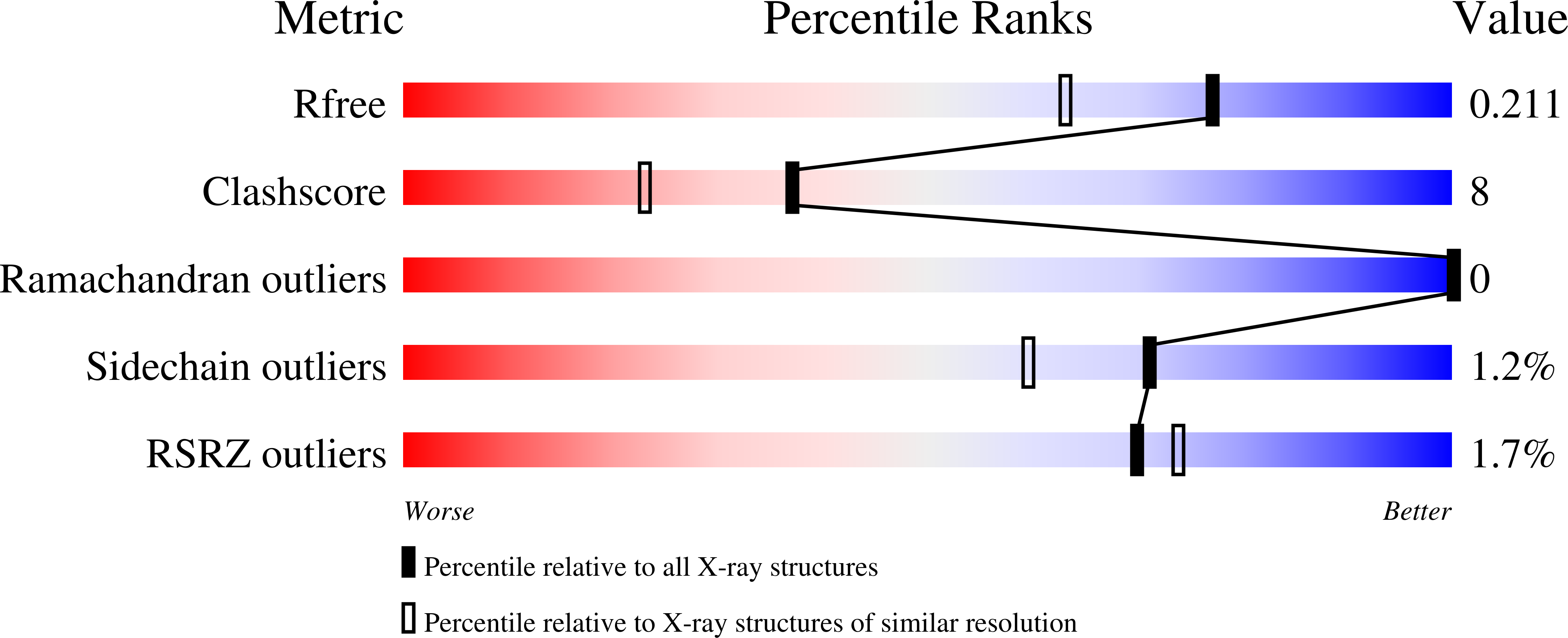Structure-based analysis of Toxoplasma gondii profilin: a parasite-specific motif is required for recognition by Toll-like receptor 11.
Kucera, K., Koblansky, A.A., Saunders, L.P., Frederick, K.B., De La Cruz, E.M., Ghosh, S., Modis, Y.(2010) J Mol Biol 403: 616-629
- PubMed: 20851125
- DOI: https://doi.org/10.1016/j.jmb.2010.09.022
- Primary Citation of Related Structures:
3NEC - PubMed Abstract:
Profilins promote actin polymerization by exchanging ADP for ATP on monomeric actin and delivering ATP-actin to growing filament barbed ends. Apicomplexan protozoa such as Toxoplasma gondii invade host cells using an actin-dependent gliding motility. Toll-like receptor (TLR) 11 generates an innate immune response upon sensing T. gondii profilin (TgPRF). The crystal structure of TgPRF reveals a parasite-specific surface motif consisting of an acidic loop, followed by a long β-hairpin. A series of structure-based profilin mutants show that TLR11 recognition of the acidic loop is responsible for most of the interleukin (IL)-12 secretion response to TgPRF in peritoneal macrophages. Deletion of both the acidic loop and the β-hairpin completely abrogates IL-12 secretion. Insertion of the T. gondii acidic loop and β-hairpin into yeast profilin is sufficient to generate TLR11-dependent signaling. Substitution of the acidic loop in TgPRF with the homologous loop from the apicomplexan parasite Cryptosporidium parvum does not affect TLR11-dependent IL-12 secretion, while substitution with the acidic loop from Plasmodium falciparum results in reduced but significant IL-12 secretion. We conclude that the parasite-specific motif in TgPRF is the key molecular pattern recognized by TLR11. Unlike other profilins, TgPRF slows nucleotide exchange on monomeric rabbit actin and binds rabbit actin weakly. The putative TgPRF actin-binding surface includes the β-hairpin and diverges widely from the actin-binding surfaces of vertebrate profilins.
Organizational Affiliation:
Department of Molecular Biophysics and Biochemistry, Yale University, 266 Whitney Avenue, New Haven, CT 06520, USA.

















